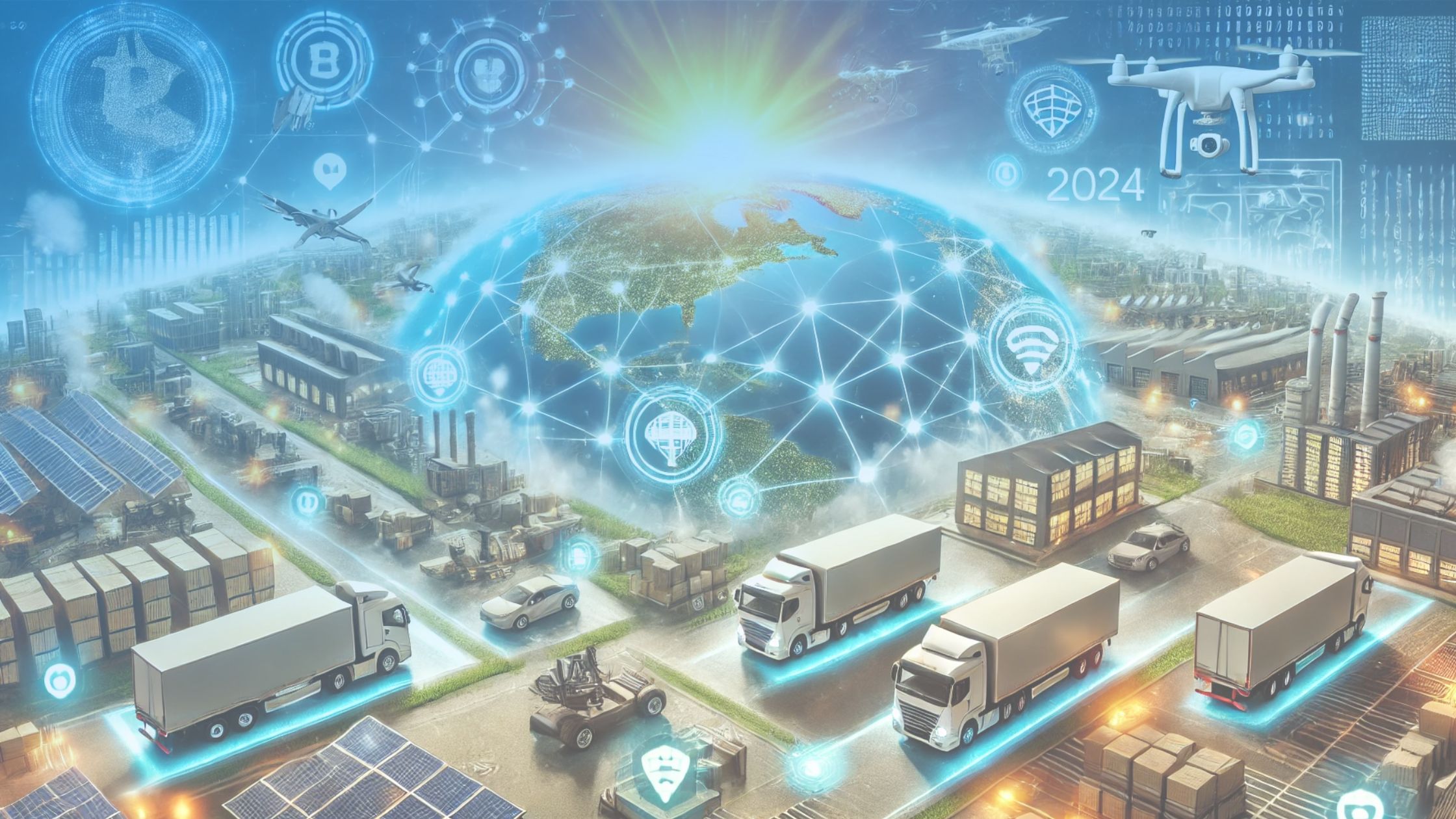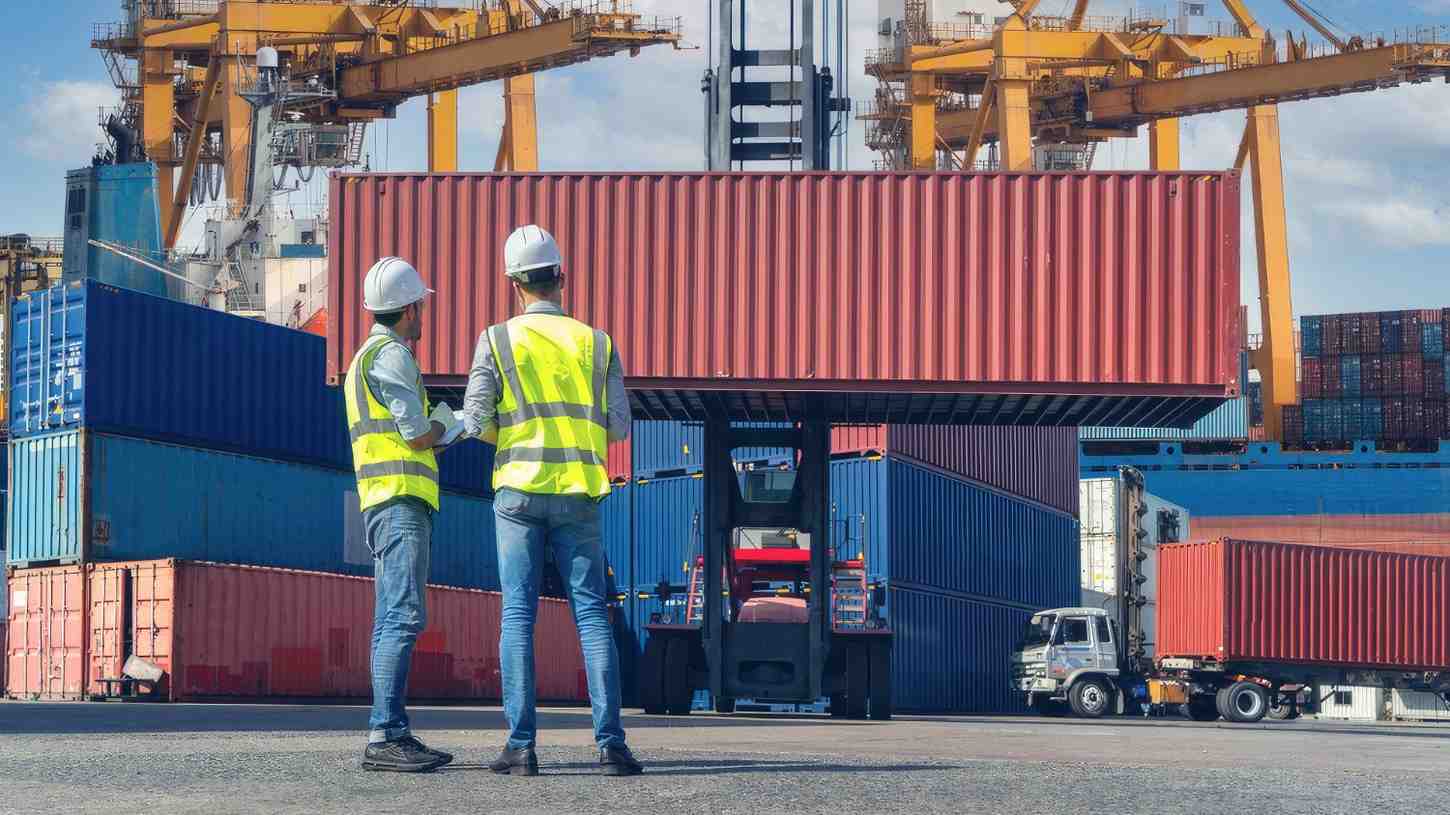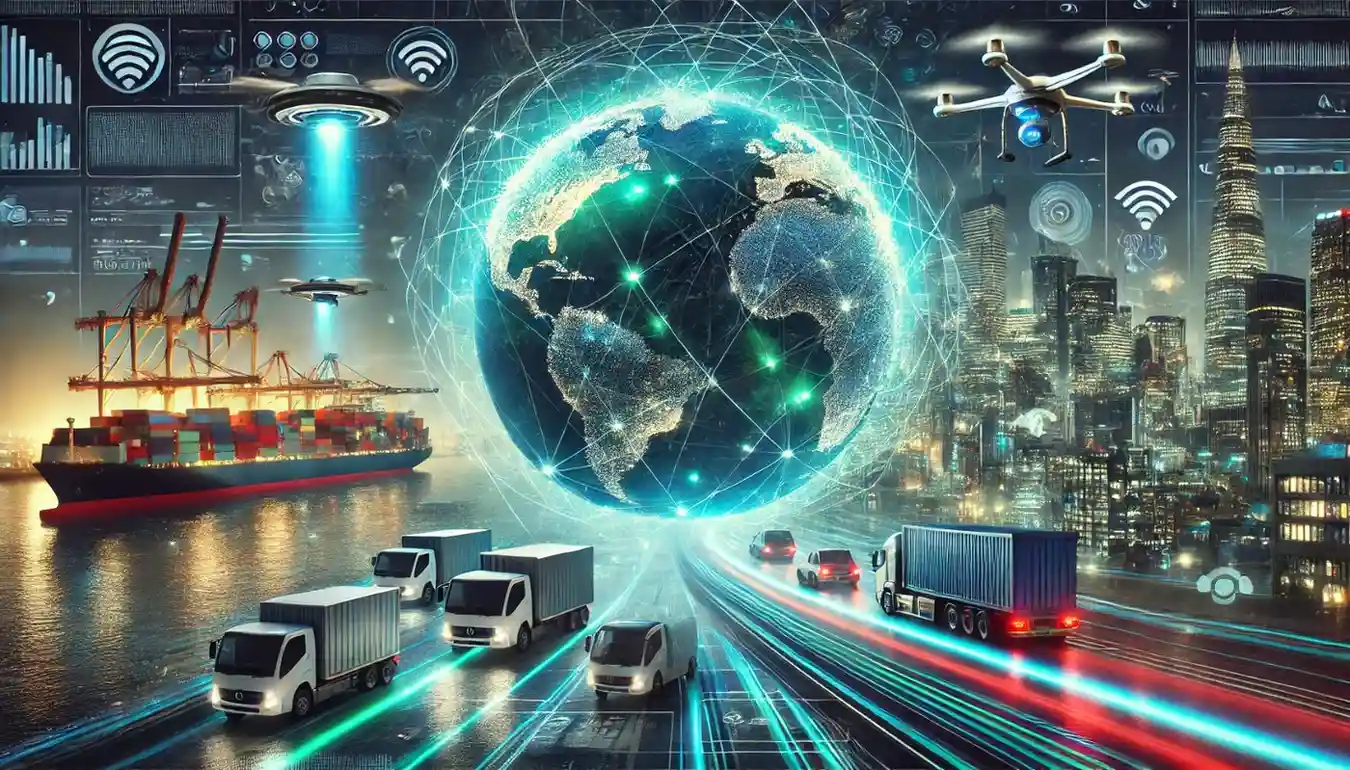
Welcome to our journey through the evolution of logistics, a fascinating tale that spans over a century of innovation and transformation. Logistics, the backbone of global commerce, has undergone radical changes since the early 1900s. From the humble beginnings of horse-drawn carriages to the cutting-edge technologies of today, the logistics industry has continuously adapted and evolved, shaping the way we conduct business and manage the flow of goods around the world.
Our story progresses through the mid-century advancements of the 1950s, ventures into the revolutionary internet era of the 2000s, and delves into the smart logistics of the 2010s. Each epoch reflects a significant leap in technology and operational strategies, illustrating how these changes not only influenced businesses and economies but also reshaped societal norms and expectations.
As we explore each milestone, we gain a deeper understanding of how logistical challenges were met and overcome, paving the way for the sophisticated systems we rely on today. Furthermore, this blog will provide insights into the future of logistics, where emerging technologies and sustainable practices promise to further transform this vital industry. Join us on this enlightening journey through the history of logistics, where we discover the past, analyze the present, and anticipate the future of this dynamic field.
The Dawn of Modern Logistics – Early 1900s
The early 1900s marked the inception of modern logistics, a time characterized by its rudimentary yet foundational methods. The era’s primary logistics scene features workers meticulously loading goods onto horse-drawn carriages. This simple, yet effective method was the cornerstone of transportation and distribution during this period.
Logistics in the early 1900s faced a myriad of challenges and limitations. The dependency on horse-drawn vehicles meant restricted speed and limited carrying capacity. This era was defined by its slow-paced transportation, confining businesses to local or regional markets. Long-distance trade was not only time-consuming but also fraught with risks due to unpredictable weather conditions and the rudimentary state of roads.
The impact of these limitations on businesses and economies was significant. The inefficiency in transportation systems led to prolonged delivery times, making it challenging to maintain the freshness and quality of perishable goods. This constraint severely limited the variety of products available in the market and hindered the potential for business expansion beyond local regions.
Furthermore, the slow pace of logistics at the time contributed to higher costs in transportation and storage, which often resulted in increased prices for consumers. Despite these hurdles, this period laid the groundwork for future advancements. The early 1900s set the stage for the evolution of logistics, progressively paving the way for innovations and improvements that would dramatically reshape the industry in the years to come.
Mid-Century Developments (1950s)
The 1950s marked a pivotal era in the evolution of logistics, characterized by significant technological advancements and a shift in transportation methods. This period saw the introduction of trucks, replacing the traditional horse-drawn carriages. This transition symbolized not just a change in vehicle, but a fundamental shift in the logistics paradigm.
The adoption of trucks brought about a dramatic increase in efficiency and capacity for businesses. Unlike their predecessors, trucks were faster, more reliable, and capable of carrying larger loads over longer distances. This leap in transportation technology enabled businesses to expand their reach beyond local markets, facilitating regional and national trade.
The efficiency of truck transportation also had a profound impact on delivery times and the freshness of goods, particularly perishables. Businesses could now manage larger inventories and deliver products more swiftly to consumers, enhancing customer satisfaction and opening up new market opportunities.
Moreover, the 1950s laid the foundation for modern logistics as we know it. This era’s advancements in transportation technology were instrumental in paving the way for more sophisticated logistics systems. It was a time of exploration and innovation, setting the stage for further advancements in logistics efficiency, supply chain management, and global trade. The legacy of the 1950s is a testament to the transformative power of technology in reshaping industries and driving economic growth.
The Internet Era (2000s)
The dawn of the 2000s heralded a revolutionary change in logistics operations with the advent of the internet. This era is characterized by the integration of digital technology into logistics processes, fundamentally transforming the industry.
A key feature of this period was the increased use of computers in logistics operations. Computers enabled more efficient data processing, management, and communication, streamlining various aspects of logistics like never before. This technological integration facilitated real-time tracking of shipments, more accurate inventory management, and efficient route planning, leading to significant time and cost savings.
The role of the internet in enhancing communication cannot be overstated. It allowed for seamless interaction between different stakeholders in the supply chain, from suppliers and manufacturers to distributors and retailers. This connectivity not only improved collaboration but also enabled a more responsive and agile logistics network, capable of adapting to changing demands and conditions swiftly.
Perhaps the most significant impact of the 2000s was the rise of e-commerce, which dramatically altered the landscape of logistics and supply chain management. E-commerce demanded faster, more reliable delivery services to meet consumer expectations for quick and efficient online shopping experiences. This shift led to the development of more complex logistics models to handle the increased volume of small parcel deliveries, reverse logistics for returns, and the need for robust last-mile delivery solutions.
The internet era marked a transition to more customer-centric logistics operations, where speed, accuracy, and reliability became paramount. This period set the stage for further innovations in logistics technology, shaping the industry into a more dynamic, interconnected, and efficient system. The 2000s, with its focus on digital integration and e-commerce adaptation, thus represents a critical chapter in the ongoing evolution of logistics.
Smart Logistics Emerges (2010s)
The 2010s marked the emergence of smart logistics, a transformative phase characterized by the integration of high-tech solutions into every aspect of logistics operations. This era witnessed the advent of state-of-the-art warehouses equipped with automated systems, the use of drones for delivery, the introduction of automated vehicles, and the application of sophisticated data analytics dashboards.
High-tech warehouses became the norm, featuring automation in storage and retrieval systems, which significantly increased the speed and efficiency of warehouse operations. The use of drones began to revolutionize delivery, especially in reaching remote or challenging locations, thereby enhancing the scope and reach of logistics services.
Automated vehicles also started to make their presence felt in this era, offering the potential for safer and more efficient transportation. These vehicles, equipped with advanced navigation and safety systems, promised a future of reduced human error and increased transport efficiency.
Data analytics dashboards played a critical role in this era, providing logistics managers with deep insights into operations. These tools helped in optimizing routes, predicting demand, managing inventory more effectively, and identifying potential bottlenecks before they could impact the supply chain.
Moreover, the rise of Artificial Intelligence (AI) and machine learning began to significantly optimize logistics processes. AI algorithms were used for predictive analytics, enabling companies to anticipate market trends and adjust their strategies accordingly. Machine learning models improved over time, learning from patterns and making smarter decisions, from forecasting demand to optimizing delivery routes.
The 2010s, with its focus on technology and data-driven decision-making, significantly enhanced the efficiency and responsiveness of logistics operations. This era set a new benchmark in logistics, showcasing how technological advancements could not only streamline operations but also open up new possibilities for innovation and growth in the logistics sector.
The Future of Logistics (Present and Beyond)
As we look towards the future of logistics, we envision a landscape revolutionized by green energy solutions and global connectivity. This future is not just a continuation of past trends, but a leap into a more sustainable and interconnected world, powered by cutting-edge technologies.
The integration of green energy solutions is set to redefine logistics, emphasizing environmental sustainability. Electric vehicles, solar-powered warehouses, and other renewable energy sources are becoming increasingly prominent, reducing the carbon footprint of logistics operations. This shift not only addresses environmental concerns but also promises long-term cost savings and efficiency gains.
Global connectivity is another hallmark of the future of logistics. The rise of the Internet of Things (IoT) enables a more connected and transparent supply chain, with sensors and smart devices providing real-time data on the location, condition, and status of goods. This level of connectivity facilitates a more responsive and agile logistics network, capable of adapting to changes and disruptions quickly.
Emerging technologies like blockchain are poised to have a profound impact on logistics. Blockchain technology offers a secure and transparent way to track transactions and movements within the supply chain, enhancing trust and efficiency among all parties involved. This decentralized approach to data management could revolutionize aspects of logistics, from reducing fraud and errors to improving inventory management.
The importance of sustainability in future logistics solutions cannot be overstated. As consumer awareness and regulatory pressures increase, companies are more motivated than ever to adopt sustainable practices. This includes not only environmental considerations but also social and economic factors, ensuring that logistics operations contribute positively to communities and economies.
The future of logistics is a dynamic and evolving landscape, where technology and sustainability converge to create more efficient, responsible, and resilient supply chains. As we move forward, the logistics sector is set to continue its trajectory of innovation, playing a crucial role in shaping the global economy and responding to the needs of a rapidly changing world.
Conclusion
The evolutionary journey of logistics is a testament to human ingenuity and the relentless pursuit of efficiency and innovation. From the early 1900s, where horse-drawn carriages were the norm, to the technologically advanced landscape of today, logistics has continually transformed to meet the changing needs of businesses and consumers alike.
Each era in the history of logistics has contributed significantly to its current state. The early 20th century laid the foundational principles of transportation and delivery, setting the stage for future advancements. The mid-century developments of the 1950s introduced trucks, marking a significant leap in efficiency and reach. The internet era of the 2000s revolutionized communication and tracking in logistics, paving the way for the rise of e-commerce and a more interconnected global supply chain. The 2010s further accelerated this transformation with the emergence of smart logistics, integrating AI, machine learning, and other advanced technologies to optimize logistics processes.
Looking ahead, the logistics industry faces both challenges and opportunities. The ongoing need for sustainability, driven by environmental concerns and consumer demand, poses a significant challenge but also offers a chance for innovation in green logistics solutions. The increasing integration of emerging technologies like IoT, blockchain, and advanced analytics continues to offer exciting opportunities for enhancing efficiency, transparency, and reliability in logistics operations.
At the forefront of these technological changes is Wahyd Logistics, a company that exemplifies the spirit of innovation in the logistics industry. By implementing cutting-edge technologies, including Artificial Intelligence and Machine Learning, Wahyd Logistics is not just keeping pace with industry trends but is actively shaping the future of logistics. Their commitment to leveraging advanced technologies positions them as a leader in the logistics sector, ready to tackle the complexities of the modern supply chain and meet the evolving needs of their clients.
Wahyd Logistics’ influence extends across diverse regions, including the Gulf Cooperation Council (GCC), South Asia, and Central Asia. In these areas, the company is not only providing state-of-the-art logistics solutions but is also contributing significantly to the economic and infrastructural development. By enhancing the efficiency and effectiveness of logistics operations in these regions, Wahyd Logistics is playing a crucial role in supporting the growth and globalization of businesses.
As we conclude this exploration of the logistics industry’s evolution, we invite you to join Wahyd Logistics in this journey towards a more efficient, sustainable, and technologically advanced future. Whether you are a business in the GCC, South Asia, or Central Asia, Wahyd Logistics is your partner in navigating the complexities of the modern supply chain and unlocking new opportunities for growth and success. Embrace the future of logistics with Wahyd Logistics, where innovation meets excellence.






